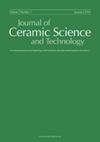采用LTCC技术构建的三维聚焦微流控装置,利用纳米沉淀法生成纳米颗粒
IF 0.4
4区 材料科学
Q4 MATERIALS SCIENCE, CERAMICS
引用次数: 4
摘要
纳米沉淀法是一种用于生成纳米颗粒的纳米化技术。一些领域,如药理学和精细化学,利用这种技术。通常采用体积庞大的批量机械工艺,产生的纳米颗粒的多分散性指数高,颗粒尺寸可重复性差,浪费能量。基于ltcc的微系统技术允许对化学过程进行不同的统一操作,使其成为化学过程小型化的使能技术。事实上,近年来LTCC微流控反应器已被用于生产具有良好粒径分布和形貌控制的微纳米颗粒。本文报道了一种三维LTCC流动聚焦微流控装置的性能,该装置采用纳米沉淀法制备用于氢化可的松药物包封的聚合物纳米胶囊。制备了尺寸为188.9 ~ 459.1 nm的单分散氢化可的松纳米胶囊。本文章由计算机程序翻译,如有差异,请以英文原文为准。
3D FOCALIZATION MICROFLUIDIC DEVICE BUILT WITH LTCC TECHNOLOGY FOR NANOPARTICLE GENERATION USING NANOPRECIPITATION ROUTE
Nanoprecipitation is a nanonization technique used for nanoparticle generation. Several fields, like pharmacology and fine chemistry, make use of such technique. Typically are used a bulky batch mechanical processes rendering high polydispersity index of generated nanoparticles, poorly particle size reproducibility and energy wasting. LTCC-based microsystem technologies allow the implementation of different unitary operations for chemical process, making it an enabling technology for the miniaturization of chemical processes. In fact, recently LTCC microfluidic reactors have been used to produce micro and nanoparticles with excellent control of size distribution and morphology. The present work provides a report on the performance of a 3D LTCC flow focusing Microfluidic device designed to fabricate polymeric nanocapsules for Hydrocortisone drug encapsulation, using nanoprecipitation route. Monodisperse Hydrocortisone nanocapsules were obtained with sizes (Tp) from 188.9 nm to 459.1 nm with polydispersity ...
求助全文
通过发布文献求助,成功后即可免费获取论文全文。
去求助
来源期刊

Journal of Ceramic Science and Technology
MATERIALS SCIENCE, CERAMICS-
CiteScore
0.80
自引率
0.00%
发文量
0
期刊介绍:
The Journal of Ceramic Science and Technology publishes original scientific articles on all topics of ceramic science and technology from all ceramic branches. The focus is on the scientific exploration of the relationships between processing, microstructure and properties of sintered ceramic materials as well as on new processing routes for innovative ceramic materials. The papers may have either theoretical or experimental background. A high quality of publications will be guaranteed by a thorough double blind peer review process.
 求助内容:
求助内容: 应助结果提醒方式:
应助结果提醒方式:


